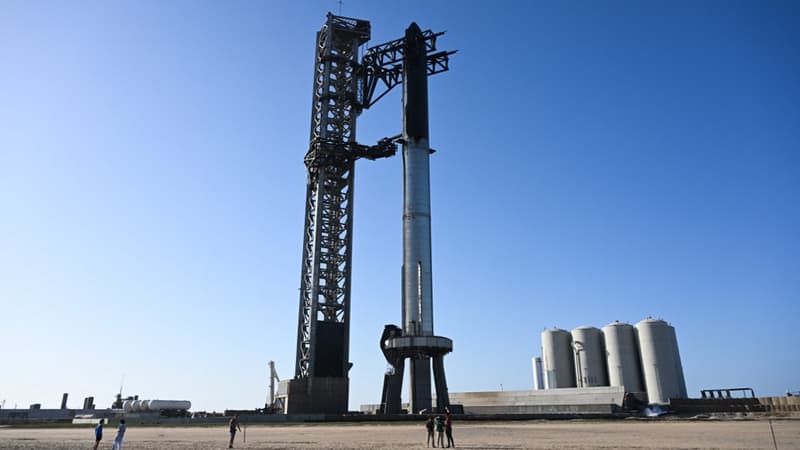Will the second try be the right one for Starship? This Thursday, SpaceX will have to try again to launch its new rocket, the largest in the world, intended for trips to the Moon and Mars for the first time in space.
The filming window will open at 08:28 local time (15:28 French time), until 09:30 (16:30). The setting for this highly anticipated spectacle is SpaceX’s Starbase space base, located in the southern tip of Texas, in the United States.
A first launch attempt in the last minutes of the countdown was canceled on Monday due to a technical problem. “All signals are green for launch,” SpaceX chief Elon Musk tweeted Wednesday night.
At 120 meters, Starship is taller than NASA’s new megarocket, SLS (98 m), which launched for the first time in November, and the legendary Saturn V, the rocket of the Apollo lunar program (111 m). The Starship’s takeoff thrust is also expected to be about twice as powerful as those two launchers, making it the strongest in the world.
rocket back to the moon
This black and silver behemoth has never flown before in its complete configuration, with its super powerful first stage, called Super Heavy and equipped with no less than 33 engines. Only the second stage of the vehicle, the Starship spacecraft that by extension gives its name to the entire rocket, carried out suborbital tests, at an altitude of about 10 km.
It was he who was chosen by NASA to become, in a modified version, the lander of the Artemis 3 mission, which is to bring astronauts back to the lunar surface for the first time in more than half a century, officially in 2025.
This Thursday, the flight plan is as follows: approximately three minutes after takeoff, the Super Heavy must take off and fall back into the waters of the Gulf of Mexico. The Starship must then fire up its six engines and continue its ascent alone, up to an altitude of more than 150 km. After going a little less than once around the Earth for about an hour, she must drop back into the Pacific Ocean.
But taking all these steps in the first test flight would be a feat. The goal is above all to collect as much data as possible to improve the following prototypes. Elon Musk wanted to temper expectations, saying he was unlikely to reach orbit on the first try. He was content in the hope that the launch pad would not be destroyed by the explosion of the Super Heavy’s engines igniting.
No soil has been reclaimed for this first
Starship must be able to carry up to 150 tons of cargo into orbit. For comparison, the Falcon 9 rocket, which SpaceX launches at a furious pace, can only carry just over 22 tons to low-Earth orbit.
But the real innovation of Starship is that it must be fully reusable, something Elon Musk believes can be achieved in “two to three years.” For this first test, no attempt will be made to recover either of the two stages of the rocket. But eventually, Super Heavy will have to come back and rest against his launch tower, equipped with two arms to immobilize him.
The Starship spaceship will have to return to Earth using retrorockets. It was this maneuver that had been attempted several times in 2020 and 2021. After several explosions on landing, a prototype had finally landed successfully. “We designed Starship to be as close as possible to airline operations,” Gwynne Shotwell, SpaceX’s number 2, explained in February.
Source: BFM TV


